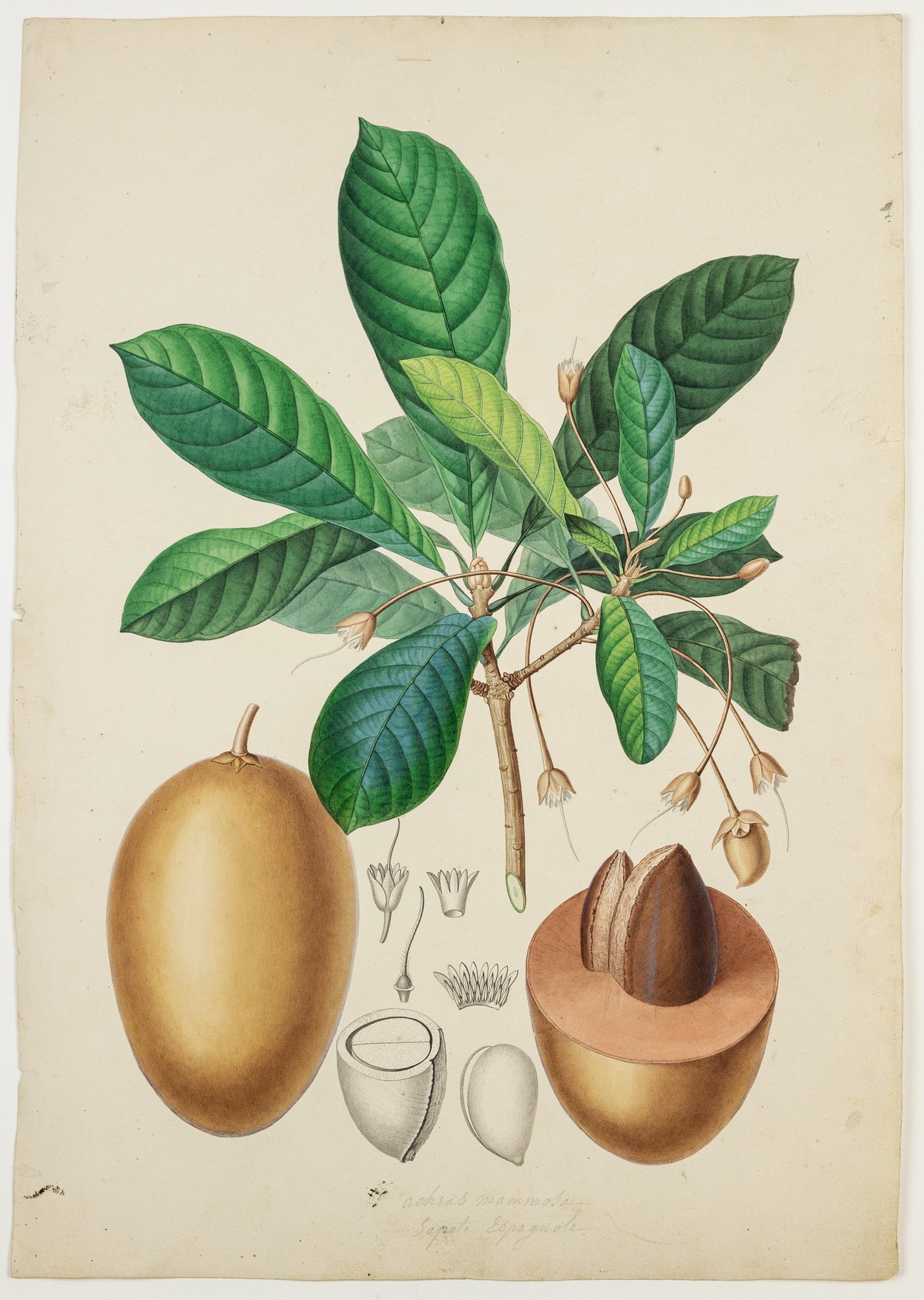from: Poiteau & Turpin Superb Botanical Drawings including varieties from the West Indies
PIERRE JEAN FRANÇOIS TURPIN (FRENCH, 1775 – 1840). Mamey sapote. 1808–1827.
PIERRE JEAN FRANÇOIS TURPIN (FRENCH, 1775 – 1840). Mamey sapote. 1808–1827.
Couldn't load pickup availability
PIERRE JEAN FRANÇOIS TURPIN
(FRENCH, 1775 – 1840)
“Achras mammosa Sapote Espagnole (Achras Mammosa Sapotillier Mammee Pouteria sapota or mamey sapote)”
Preparatory drawing for F.R. Tussac. Flore des Antilles, ou histoire générale botanique, rurale et économique des végétaux indigènes des Antilles.
Paris: chez l’auteur, F. Schoell et Hautel, 1808–1827
Vol. 3 Pl. 6
Medium:
Watercolor and pencil on paper
Inscription:
Inscribed “Achras mammosa Sapote Espagnole”
Dimensions:
Paper size: 17 1/2 x 12 1/4 in.
Frame size: 23 3/4 x 20 1/2 in.
Pouteria sapota, also known as the mamey sapote, is originally from Mexico and grows in Central America and the Caribbean.
The fruit is technically classified as a berry, ranging from pink to orange to red, while the skin is brown and has a texture between sandpaper and the fuzz on a peach. The texture of the fruit is creamy and soft, and the flavor is a combination of sweet potato, pumpkin, honey, prune, peach, apricot, cantaloupe, cherry, and almond.
Tussac wrote of this species:
“This species of tree, which is called sapotier in Santo Domingo, is found in the lower mountains which dominate the town of Cap-Francais; it is noted for its beautiful stature, its beautiful foliage and the size of its fruits, which provide proof that beauty and goodness are not always found together; for they are hardly edible, and they are never served on tables. They are, however, interesting in one respect; the pit contains an almond nut of such pleasant bitterness and aroma, that the famous liquor maker of Martinique, Madame Amphoux (a famous French distiller), preferred them to the apricot pits/nuts of France, to make the exquisite liqueur which she called crème de core. Every year several small ships arrived in Martinique from Curacao, carrying no other cargo than sapot pits/nuts. It is said that in Malabar they happily eat the flowers of this tree, and put them on the skin to give it a pleasant scent. The wood of this tree is not hard, it is not used for any economic use.”

Appeared in F.R. Tussac. Flore des Antilles, ou histoire générale botanique, rurale et economique des végétaux indigènes des Antilles.
Paris: chez l’auteur, F. Schoell et Hautel, 1808–1827
Vol. 3 Pl. 6


